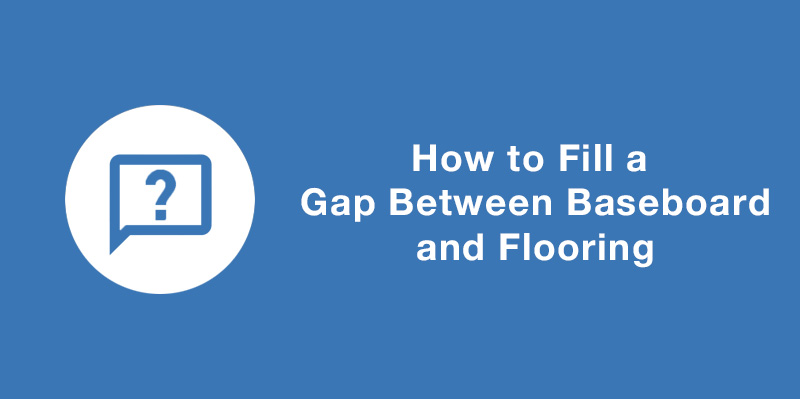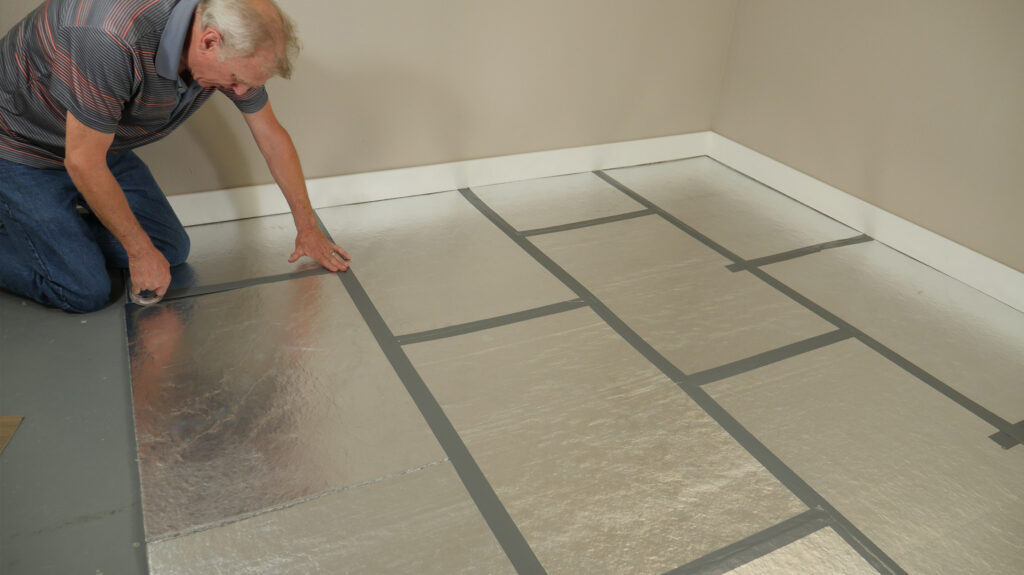How to Fill a Gap Between Baseboard and Flooring

You are about to install your new flooring. As you lay the first plank you realize that there is going to be a gap between your baseboard and your floor. Don’t worry, this issue is more common than you think. Especially with the rise of replacing carpets with hard surface flooring like luxury vinyl plank. There is one major factor in how to fill a gap between your baseboard and flooring. Are your floors installed already or not? In this article, we are going to cover ways to fix gaps for flooring yet to be installed and floors that have already been installed.
Fixing gaps before installing the floors
Ideally, you want to address a gap between your baseboard and flooring before your flooring is installed. This method is closer to solving the root of the problem rather than covering up the issue after the flooring is installed. To close the gap, you will need to raise your flooring. Here are the best methods for raising your flooring.
Install a Fiber Board Underlayment
QuietBoard is a specially formulated fiberboard underlayment that makes fixing the gap cheap and easy. It is made in the USA from 100% recycled fibers and has no volatile organic compounds (VOCs) or other harmful emissions. Simply layout the boards and tape the seams.
Not only will QuietBoard raise the floor height, but will give your new flooring other benefits as well. The dense fibers will reduce noise, support your flooring, and absorb moisture.


Fixing gaps after floors are already installed
If your flooring is already installed, and you are noticing gaps between your baseboard and flooring, you’ll need to take a different approach. Here are the four best methods:
Use Caulk to Fill the Gap
If you’re looking for a quick fix and looks aren’t the most important factor, caulk is a great option. You will want to line the floor with blue painter’s tape to minimize cleanup. You’ll want to use a paintable latex silicone caulk to fill the gap. Once the caulk is dried, paint the caulk to match the baseboards.
Install Quarter Rounds
Quarter rounds are a relatively cheap, nice-looking option. Go to any hardware or home improvement store and get some quarter-round trim, which is about 3/4 inch high and can be bought at any hardware or home improvement store. Cut it to length with a miter saw to angle the ends, then nail it to the baseboard with finish nails, being careful not to nail it into the floor. Fill the nail holes with wood putty, then paint or stain to match your existing floor planks. Generally, you want to match the quarter rounds with your flooring. A potential setback is struggling to find quarter rounds that match your existing flooring.
Replace the baseboards
If you have large gaps, you may want to replace the baseboards. Use a putty knife to gently pry the base away from the wall. Use your hands to remove the baseboards the rest of the way. You will want to buy slightly larger baseboards, this will prevent a repaint. It will also leave the cleanest looking finish of all the options.
If you have floating floors and don’t want to get new baseboards, it may be worth taking out the existing flooring and adding an underlayment made to raise your flooring like QuietBoard Underlayment.
Add Insulation
When there is a gap between your flooring and baseboard you lose insulation. Adding weather stripping, like you would on a door or window will add that insulation back into your home. However, this may not always be the most visually appealing option.
Final Thoughts
Once you know how to fill a gap between your baseboard and flooring it’s an easy fix. Ideally, you want to address potential gaps before you install your new flooring. However, if your flooring is already installed or you have gaps that developed over time, fixing the gaps with the methods above will work as well.
Join Our Newsletter
You are about to install your new flooring. As you lay the first plank you realize that
